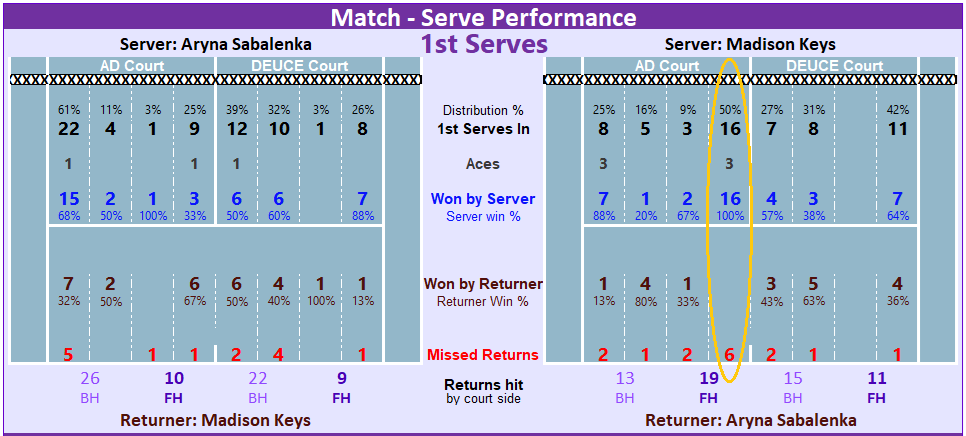WTA1000 Indian Wells: Aryna Sabalenka vs Madison Keys semifinal analysis
A shocking rematch of the Australian Open final
None of the BNP Paribas Open semifinalists could be considered a surprise as all of them reached that stage of the event while riding some sort of double digit win streak:
Aryna Sabalenka (WTA #1) had won her last 16 matches on US hardcourts, dating back to her 2024 Cincinnati and US Open titles;
Australian Open champion Madison Keys (WTA #5) was unbeaten in 16 matches;
Recent WTA 1000 Dubai winner Mirra Andreeva (WTA #9) was on a 10-match win streak;
Defending champion Iga Swiatek (WTA #2) had not dropped a set the last 10 times she stepped on a court at the Indian Wells Tennis Garden, breezing through the 2025 draw for the loss of just 12 games in 4 matches.
The quartet was playing top-class tennis and the Indian Wells semifinals offered the extra bonus of having the Top-2 players in the world facing opponents they had already lost to during the 2025 season.
In the top-half of the draw, there was a mouthwatering rematch of the 2025 Australian Open final between Sabalenka and Keys.
Shockingly, it wasn’t a match at all as Sabalenka crushed Keys 6-0, 6-1 in 51 minutes. The American barely avoided the double bagel embarassment, holding serve at the very last opportunity. A moment that sparked the loudest cheer of the night while Keys raised her arms in a mix of joy and relief.
So what changed so much in comparison to the thrilling and tightly-contested Australian Open final?
1. Keys’ AD side T serves
In our analysis of the Melbourne title decider, we highlighted that Keys won all 16 AD side points she started with a 1st serve down the T (marked by gold ellipse, image below).
Also noteworthy that the eventual 2025 Australian Open champion opted for that direction in 50% of AD side 1st serves landed (16 of 32).
This time however, Keys went down the T in just 2 of 14 (14%) AD side 1st serves and lost both points (marked by gold ellipse, image below).
Flat T serves tend to be more efficient in the faster Australian hardcourts while the slow and high-bouncing surface at Indian Wells invites for more wide kicking serves, even after the switch from Plexipave to Laykold.
Still, it was quite puzzling to find out how much Keys deviated from a tactical option that resulted in a 100% win-rate in Melbourne or how she didn’t resort to it at any stage during the match despite having minimal success serving to Sabalenka’s backhand.
2. Sabalenka playing behind
One distinctive feature of the Australian Open final was how Keys was intent on jamming Sabalenka’s groundstrokes with a combination of speed and depth of shot while Sabalenka attacked open space and forced Keys to sprint a lot more (more details here).
From the onset of the Indian Wells semifinal, Sabalenka used a different strategy, surprising Keys quite a few times by playing behind.







